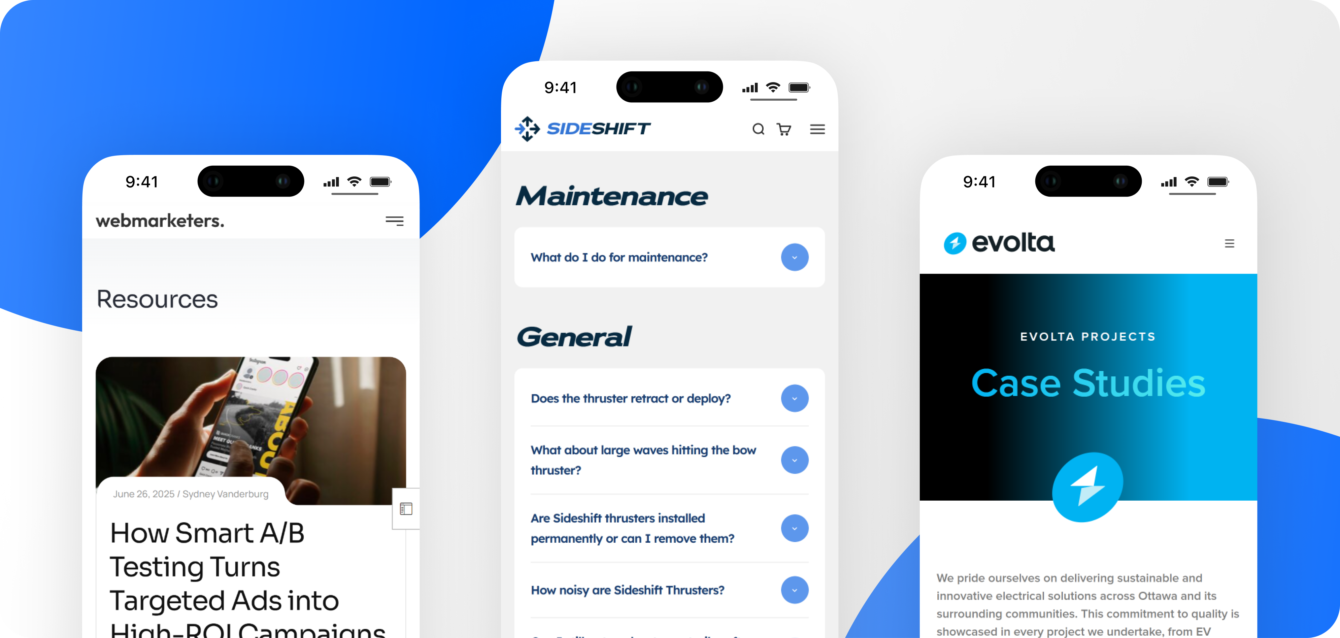AI has emerged rapidly, leaving many businesses uncertain about the future of SEO.
What was once just “SEO” has now splintered into new terms like AISO, AEO, GEO, AIO, and more.
If you’ve noticed a decline in traffic, likely caused by decreased click-through rates (CTR), you’re not alone. Whether you’re trying to get ahead of the curve or simply stay afloat, one thing is certain—AI is here to stay, and it’s fundamentally changing how people search.
In This Article:
- What do these new AI-related acronyms mean?
- How is AI impacting businesses?
- The difference between Answers and Direction in user intent
- How to optimize for AI-driven search with a focus on revenue
What Do These New AI Acronyms Mean?
What is AISO?
AISO = AI Search Optimization
This is essentially SEO for search results that include an AI-generated overview at the top of the search page.

What is AEO?
AEO = Answer Engine Optimization
AEO is the practice of optimizing content to be featured in AI-powered search engines that provide direct answers to user queries.

What is GEO?
GEO = Generative Engine Optimization
Unlike AEO, GEO focuses on optimizing content to be sourced and synthesized by AI into dynamic, context-aware responses using multiple sources.
What is AIO?
AIO = AI Optimization
While AISO, AEO, and GEO fall under AIO, the term typically refers to improving user experience and increasing your chances of being selected as a recommended source.
In any case, we are still talking about SEO as all this is still a form of search optimization.
But how is search evolving? Will it impact your business? We’ll go on to discuss that next.
How Is AI Impacting Businesses?
AI is forcing businesses to double down on understanding and meeting customer needs. In a world overflowing with content, quality now trumps quantity.
While AI helps users get faster answers, it doesn’t sell products or deliver services. That means your keyword strategy needs to evolve—focus on driving conversions, not just traffic.
- Content created to attract traffic (e.g. short blogs answering simple questions) is being replaced by AI summaries.
- Content created to generate sales—like detailed service pages, FAQs, case studies, product galleries, and videos—still performs well and can even benefit from AI-powered exposure.
The Harsh Reality: How AI Is Disrupting Search
- More questions are being answered directly on the search results page—without users visiting a website.
- Organic results are being pushed further down by AI summaries, FAQs, videos, and other content.
- CTRs for organic listings have dropped significantly.
- Short-form blogs are largely obsolete unless adapted to earn AI citations.
- Fighting for traffic that AI has claimed is often a losing game—but much of that traffic wasn’t converting in the first place.

Answers vs. Direction: What Users Really Want
The key difference is user intent.
Answers
- Users want quick, accurate information.
- AI Overview dominates these results.
- Traffic is minimal.
- Shallow blog posts (<1,000 words) are often replaced by AI summaries.
Direction
- Users are seeking guidance to make a decision or purchase.
- Traditional search results still play a major role.
- Traffic is more likely to convert.
- Content like product pages, service pages, resource hubs, and videos perform well.
Takeaway: Divide your keyword strategy into two groups—keywords that answer questions (low traffic, informational) and keywords that indicate buying intent (high conversion potential).
How to Optimize for AI With a Focus on Revenue
Despite the new acronyms, this is still SEO—just evolved.
SEO today is about intersecting with what people are searching for and optimizing your content to turn that attention into business.
Step 1: Audit Your Current Performance
- Have you lost traffic recently?
- Are your impressions and rankings stable, but CTR has dropped due to AI overlays?
- Has this decline impacted leads or sales? If not, the lost traffic likely wasn’t valuable.
- Use Google Search Console to assess changes and spot opportunities.
Step 2: Refocus Your Strategy
- Identify search queries that drive sales.
- Use tools like Answer the Public or ChatGPT to explore high-intent keyword opportunities.
- Look for queries where AI isn’t dominating the results—or aim to be one of the top 3 sources AI links to.

Step 3: Implement the Right Content Structure
- Sitemap: Structure it to support your refined keyword strategy.
- Rich Content: Enhance product and service pages with strong copy and visuals.
- Schema Markup: Help AI better understand and categorize your content.
- FAQs: Useful for AEO and addressing specific customer concerns.
- Lists & Comparisons: Great for authority-building and AI ranking.
- Factual Content: AI favours well-cited, original data.
Tracking and Measurement
Remember:
Traffic is vanity. Conversions are sanity. Sales are king.
While AI rankings remain somewhat unpredictable, Google Search Console and GA4 are essential tools. Use them to measure conversions, identify what’s working, and double down on strategies that drive results.
Final Thoughts
Don’t panic—adapt.
AI is not killing SEO; it’s evolving it. It’s rewarding businesses that create valuable, focused content and penalizing shallow, generic content.
AI is essentially the newest version of a search algorithm update. And like every algorithm shift before it, the winners are the ones who pivot strategically.
If your business needs help adapting your SEO strategy or implementing AI-optimized content, feel free to get in touch—we’re here to help.



